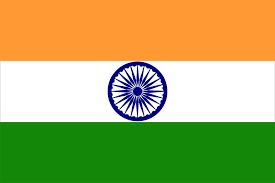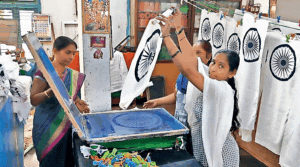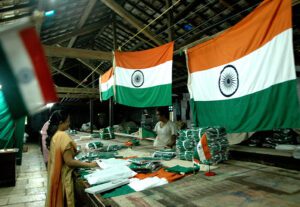Independence Day 2023: How India’s Tiranga is Crafted for Independence Day?
13/08/2023 2023-08-13 19:24Independence Day 2023: How India’s Tiranga is Crafted for Independence Day?
Independence Day 2023: How India’s Tiranga is Crafted for Independence Day?
India’s Independence Day, celebrated on August 15th, calls with the majestic tricolor flag unfurling over the Red Fort in Delhi. At first glance, crafting a flag with three colors and the Ashoka Chakra might appear simple. It’s not as simple as it looks. Crafting this iconic symbol involves a lot of careful work and precision. Let’s take a closer look at how it all comes together.
The journey of creating the national flag is a meticulously standardized process that involves dedication and attention to detail. The responsibility of manufacturing the tricolor rests with the Khadi Development and Village Industries Commission (KVI) of Karnataka, which has entrusted this task to the Karnataka Khadi Gramodyog Samyukta Sangha (KKGSS) in the village of Bengri, Hubli city, Karnataka.

Stages of Creation
- Spinning Yarn: The process begins with spinning the yarn before it reaches the charkha.
- Weaving the Cloth: The spun yarn is skillfully woven into cloth, forming the canvas for the tricolor.
- Dyeing and Division: The cloth is dyed into three lots, ensuring vibrant and consistent colors.
- Stitching and Assembly: The dyed cloth is then stitched together with precision, bringing the three colors and Ashoka Chakra into harmonious alignment.
- Final Touch: After undergoing these meticulous stages, the national flag takes its final form, ready to proudly wave as a symbol of unity and freedom.
Is it an Art or a Science?
Shivanand S. Mathapathi, the General Secretary of Karnataka Khadi Gramodyog Samyukta Sangha, emphasizes that crafting the tricolor is an art as well as a science. Expert teams, primarily comprised of women, work tirelessly to meet the stringent standards set for the flag’s creation. Rigorous lab testing, involving 18 different types of tests, ensures that every flag adheres to the highest quality.

Women dominate the Tiranga manufacturing unit. Their unwavering commitment to precision and standards is highlighted, contrasting with the occasional frustrations that can arise among their male counterparts. The dedication of the all-female team ensures that the flag-making process remains unwavering in its attention to detail.
Stringent Lab Testing
The intricate lab testing process involves assessing the colors used for the flag. If any color falls even slightly below the specified standard, the cloth undergoes re-dyeing, underscoring the meticulous nature of the craft. From color accuracy to size uniformity, every aspect of the flag’s design is fixed with precision.
Crafting in Two Parts
The journey of the tricolor involves two critical parts. The Khadi Gramodyog unit in Bagalkot handles the spinning and weaving of yarn to create the cloth. This cloth then travels to the Bengri unit in Karnataka, where it’s transformed into the tricolor by being divided into plots, dyed, and adorned with the Ashoka Chakra.

Variety of Sizes
The Tiranga comes in nine distinct sizes, each serving a different purpose:
The 16×4 inch flag adorning VIP tables.
The grand 12×8 feet flag at Rashtrapati Bhavan and Red Fort.
The 9×6 inch flag for VIP cars.
The 6×4 feet flag for army personnel’s final journey.
The 18×12-inch flag is flown on VIP aircraft and trains.
The 5.5×3 feet flag for public buildings.
The 3×2 feet potted flag.
The 21×14 feet flag for buildings.
The 99×6 feet flag for Parliament House and medium-sized government buildings.

Approximately 35 million flags are supplied annually for various occasions across the nation. Beyond Independence Day and Republic Day, these flags adorn government festivals, offices, and schools, embodying the spirit of unity and pride throughout the year.
The Tiranga, India’s emblem of freedom and unity, is far more than just a combination of colors. It is a result of an intricate process that combines the skill of craftsmanship with the precision of science. Behind its vibrant hues and iconic Chakra lies the dedication of women-led teams and a commitment to maintaining impeccable standards. As the tricolor waves, it symbolizes not only India’s past struggles but also its ongoing journey towards a brighter future.
Happy Independence Day!!
















